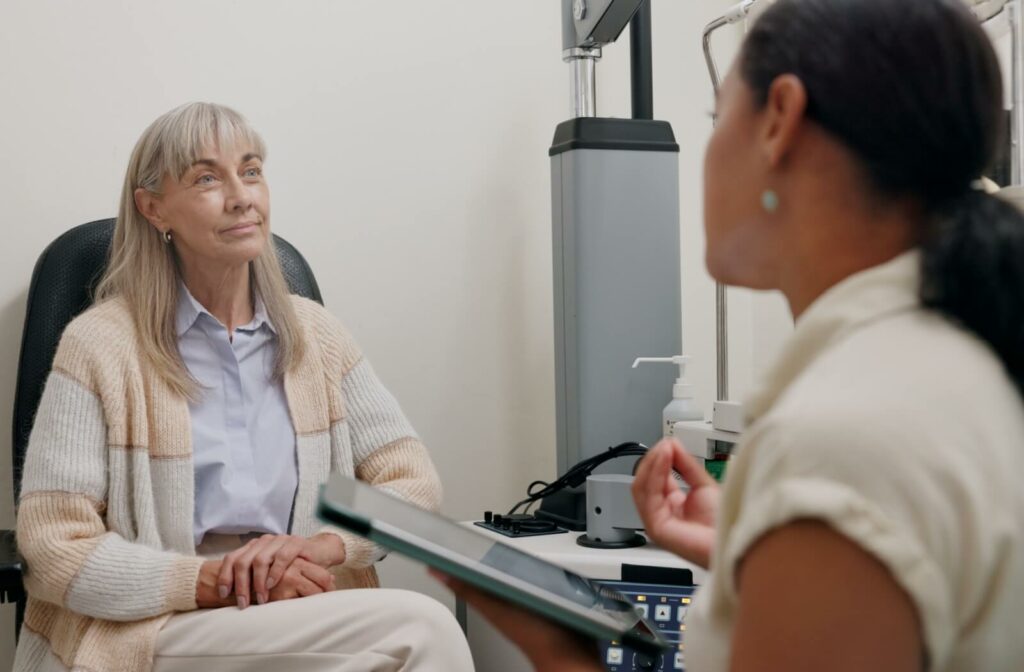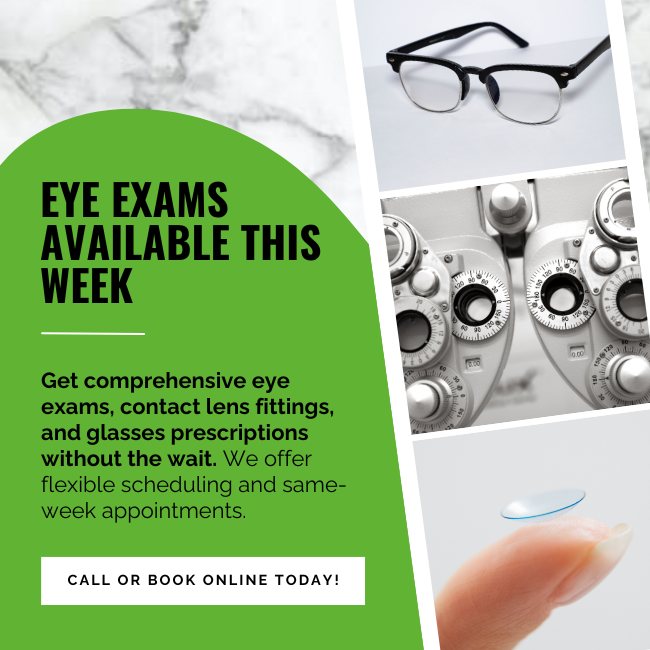If you have astigmatism, you might notice that your vision is a bit blurry or distorted, regardless of whether you’re looking at something up close or far away. This common refractive error affects many people, and it often leads to questions about correction options—especially when it comes to contact lenses.
Many people wonder if contacts are even a possibility for them. Yes, you can wear contact lenses even if you have astigmatism, thanks to specialty contact lenses that can correct for the shape of an astigmatic eye. An eye exam is the first step to find out which options may work for you.
What Is Astigmatism?
Astigmatism occurs when your cornea (the clear front surface of your eye) or the lens inside your eye has an irregular shape. Instead of being round like a basketball, it’s shaped more like a football. This less regular shape causes light to focus on more than one point in the eye, which can make your vision seem fuzzy or stretched out.
Common Signs You May Have Astigmatism
You may not always notice the signs of astigmatism, but some common symptoms can point to the condition. These can include:
- Blurry or distorted vision
- Eye strain or discomfort
- Headaches
- Trouble with vision at night
- Needing to squint to see clearly
How An Optometrist Diagnoses Astigmatism
An optometrist is your partner in maintaining your eye health and clear vision. During a comprehensive eye exam, we can determine if you have astigmatism and provide you with a prescription for vision correction.
What To Expect at Your Eye Exam
To diagnose astigmatism, we perform a few straightforward tests. We use a standard eye chart to check your visual acuity, which tells us how clearly you see at different distances. We also perform a refraction test to measure how your eyes bend light and determine the exact prescription you need for clear vision.

Contact Lens Options For Astigmatism
You have several choices when it comes to contact lenses for astigmatism. While standard soft contacts might not provide the clear vision you need, there are different types of specialty contact lenses designed for people with astigmatism. Your optometrist can help you find a comfortable and effective fit.
Toric Contact Lenses
Toric lenses are the most common type of soft contact lens used to correct astigmatism. These lenses have two powers (one vertical and one horizontal) to account for the fact that eyes with astigmatism aren’t perfectly round. The lenses themselves are also designed to stay in place on an astigmatic eye.
Rigid Gas-Permeable Lenses
Another option is rigid gas-permeable (RGP) lenses. These contacts are made of a firmer material that holds its shape on the eye. This consistent shape helps compensate for the cornea’s irregularity and can provide very sharp vision.
Eyeglasses & Other Correction Methods
Contact lenses aren’t the only solution for correcting astigmatism. There are other effective methods available, and your optometrist can discuss which one best fits your vision needs and your lifestyle. The goal is to find a correction method that feels right for you.
Eyeglasses
Eyeglasses are a simple and common way to correct astigmatism. They work by accounting for the shape of your eye and focusing light directly onto your retina.
Laser Eye Surgery
For some people, laser surgery procedures are an option. These procedures permanently reshape the cornea to correct its irregular curve. This can reduce or even eliminate the need for glasses or contact lenses for many people.
Causes & Changes in Astigmatism
Astigmatism is often something you’re born with, but it can also develop later in life. Its cause isn’t always known, though genetics can play a part. Over time, however, you might notice that your prescription changes.
Age & Your Vision
As you get older, the lens inside your eye can slowly change shape, which may cause or alter astigmatism. The cornea can also change over time. These are natural shifts that an optometrist can track during your regular eye exams.
Eye Injury or Disease
A serious injury to the eye can sometimes change the shape of the cornea and lead to astigmatism. Similarly, eye disease may also affect the cornea’s curvature. That’s why it’s so important to monitor your vision.
Talk to an Optometrist About Your Vision
If you think you might have astigmatism or have questions about your vision correction options, an eye exam is a great next step. A comprehensive exam with an optometrist can give you a clear picture of your eye health. We can answer your questions and recommend a personalized plan to help you see clearly.
At River City Vision Center, our team is here to help you explore all your options, from contacts to glasses. We focus on providing personalized care that fits your needs and lifestyle. Schedule an appointment with us today to discuss your vision.





